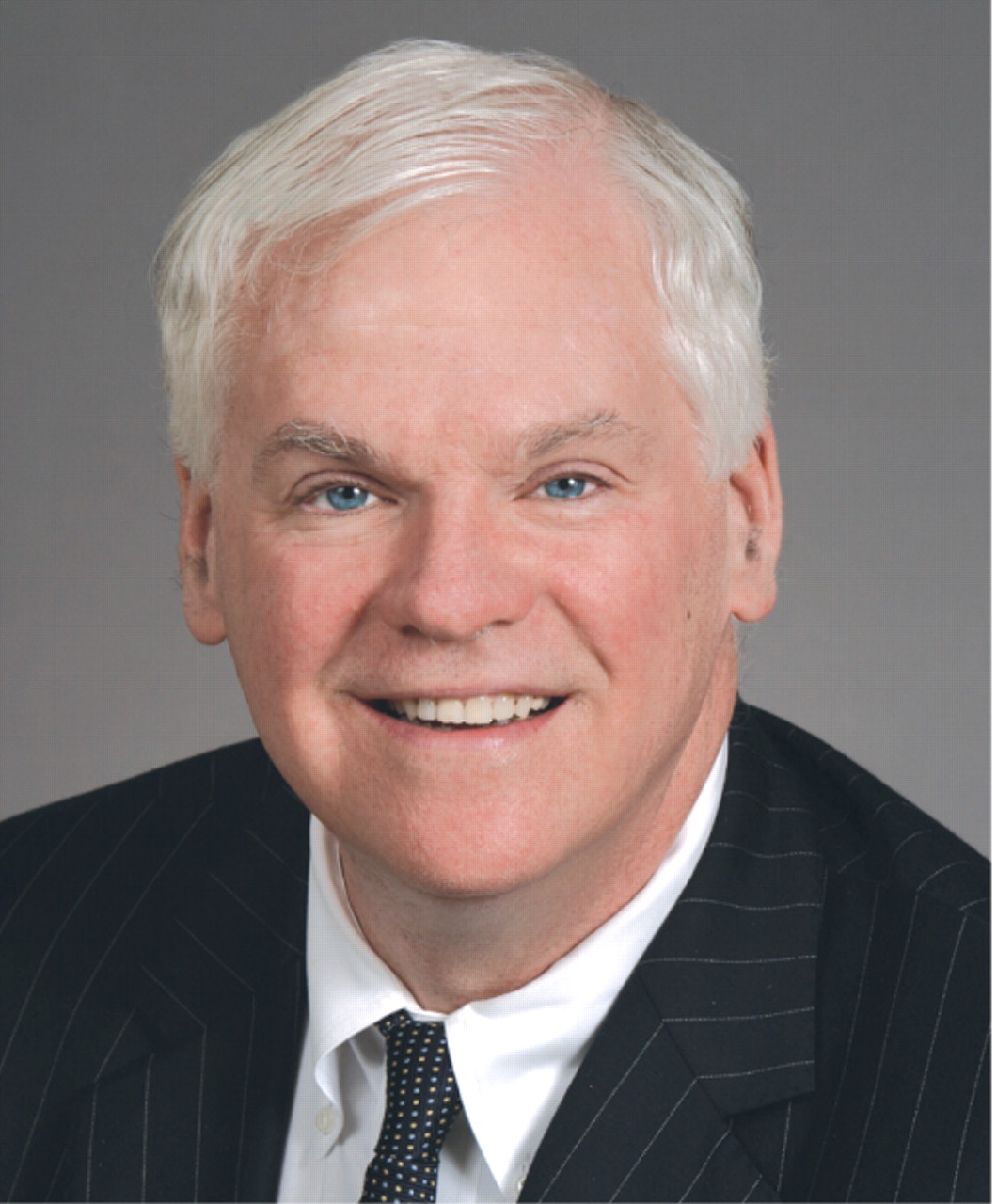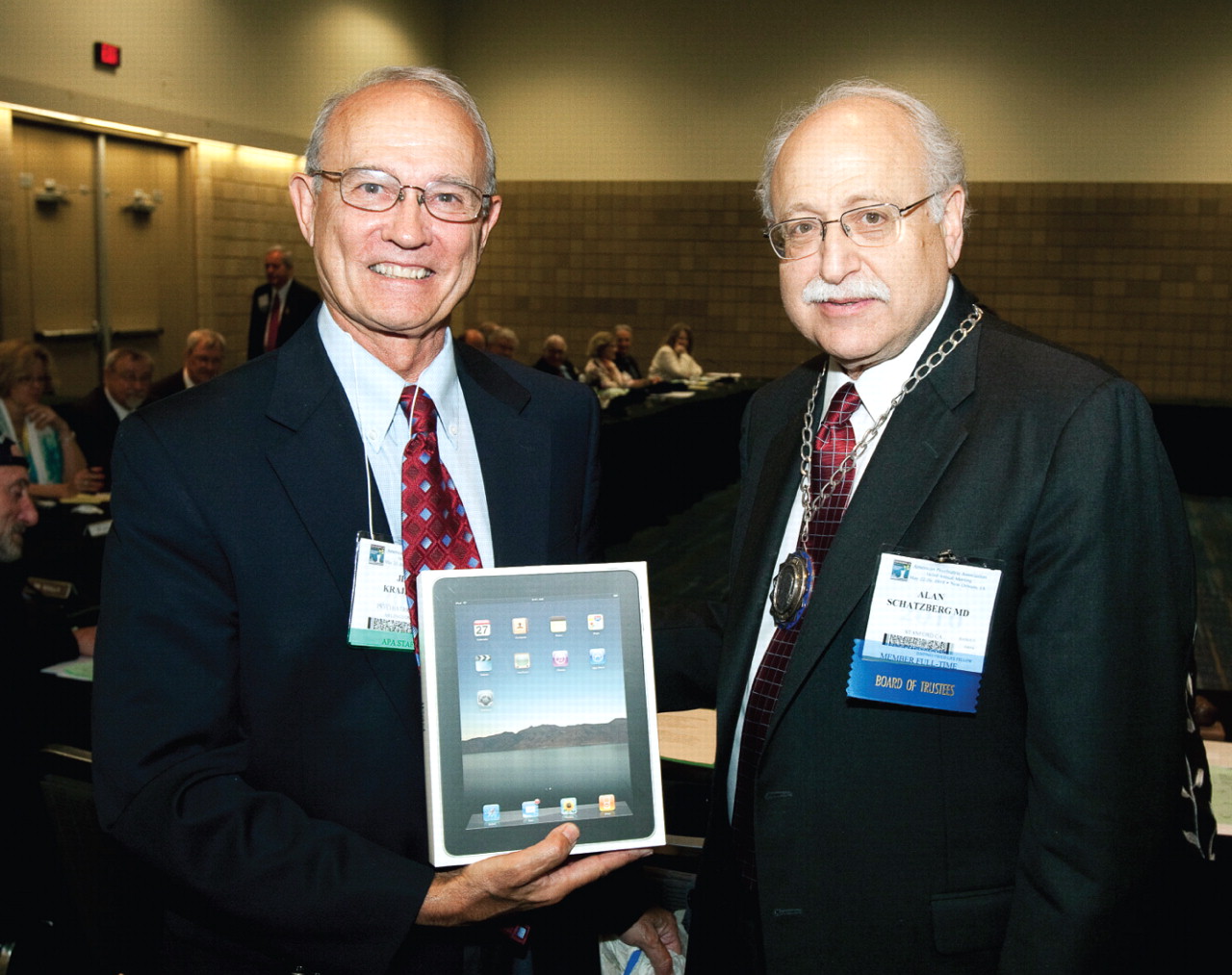A Job Well Done

As many of you may have read in the April 16 issue, Dr. Jim Krajeski announced that he was resigning as editor in chief of Psychiatric News effective at the end of APA's 2010 annual meeting in New Orleans. The Board of Trustees has appointed former APA President Carolyn Robinowitz, M.D., as interim editor until a new editor is appointed.
The first step of the search process is now under way—in March, outgoing APA President Alan Schatzberg, M.D., appointed a work group to determine the future directions of Psychiatric News. I expect that in addition to continuing to produce a print version, Psychiatric News will launch an e-mail newsletter and enhance its Web site. But more about that in a future issue. Right now I'd like to say a few words about the work that Jim has done for Psychiatric News and for APA over the years.
Jim took over as editor in chief of Psychiatric News in 1998. At that time, many thought that Psychiatric News should be APA's “house organ,” that is, a publication that would mainly report on and reflect the Association's positions. Jim had a greater vision. We needed a newspaper that would reshape coverage of APA news—that would help members better understand how the Association's efforts directly benefited them and their patients—as well as keep readers current with cutting-edge clinical and research news and policy-related issues that affect the profession and practice of psychiatry. To do so responsibly and credibly, he believed, necessitated objective reporting and comprehensive coverage of controversial issues internal and external to APA.
Jim's focus has always been on you, our members. When Jim assumed the position of editor in chief, he began by surveying members about their informational needs and expectations and then translated those findings into reshaping the newspaper. And to ensure that Psychiatric News continued to respond to members' needs, he conducted surveys on a regular basis and fine-tuned the paper's content to keep it relevant to members.
In addition, Jim brought many innovative changes to Psychiatric News. Among them were redesigning the newspaper to transform it into a publication as attractive as any large, profitable commercial publication; increasing the total amount of editorial content and devoting more of it to research and clinical news, as members had requested in the readership surveys; making the newspaper reader friendly by adding section heads identified by color and article summaries to introduce each article so that busy readers could decide quickly what they wanted to read; and increasing the use of charts, photographs, art, and other items of visual interest.
But the changes Jim made to the newspaper went beyond cosmetics. His goal was to be inclusive of all APA members and the many constituencies they represent. Also, he ensured that members had a chance to have their voice heard, even when—or perhaps especially when—they disagreed with APA. One indicator of the strength of an organization, he believed, is the extent to which it embraces a diversity of opinion.
Members have often told me how much they like and appreciate Psychiatric News, and Board members have heard similar comments about the efforts of Jim and his staff.
Jim's dedication to APA began long before he was appointed editor in chief of Psychiatric News. He chaired the Committee on Gay, Lesbian, and Bisexual Issues from 1983 to 1989 and APA's Commission on AIDS from 1990 to 1991. He also served as an Assembly representative for the Caucus of Lesbian, Gay, and Bisexual Psychiatrists (1983 to 1998) and as a member of the Ad Hoc Committee of the Board of Trustees on AIDS (1987-88), Assembly Executive Committee and Assembly Committee on Planning (1988-89), Joint Commission on Government Relations (1991-94), Joint Commission on Public Affairs (1996-98), and Task Force on Strategic Planning (1997-98). Moreover, he was instrumental in the work that led to removing the diagnosis of ego-dystonic homosexuality from DSM in 1986.
For many years, Jim, a resident of Corte Madera, Calif., was in private practice and also served as the regional medical advisor to the Social Security Administration Disability Program for Region 9, San Francisco. He was active in the Northern California Psychiatric Society as well as the California and San Francisco medical societies.
Among the many awards he has received are the 2006 Area 6 Warren Williams Award, the 2000 Presidents' Distinguished Service Award from the Northern California Psychiatric Society, the 1998 James Paulsen Award of the Association of Gay and Lesbian Psychiatrists, and the 1992 Regional Commissioner's Citation of the Social Security Administration for outstanding medical and program guidance for the SSA Disability Program.

James Krajeski, M.D., holds the Apple I-Pad presented to him by outgoing APA President Alan Schatzberg, M.D., at the Board of Trustees meeting in May in New Orleans. The I-Pad was a gift from the APA Board to thank Krajeski for his 12 years of service as editor in chief of Psychiatric News.
Jim's connection to Psychiatric News isn't ending yet, however. He is a member of the work group that is looking at the future of Psychiatric News and will pass on its recommendations to the Board of Trustees later this year. And in recognition of his appreciation of electronic technology—he telecommuted from California with the Psychiatric News staff using a variety of electronic means—the Board of Trustees presented him with an apt thank-you gift at its meeting in May: an Apple I-Pad. I'm told that an “app” will soon be in development for this popular device so that Psychiatric News will look good and can be read easily almost anywhere.
Jim has set the bar high for the next editor in chief. He knew that Psychiatric News had to be more than a house organ to best serve APA members. He took that position because of his commitment to APA—our members, our profession, and our patients—and because of his own extraordinary integrity. His combined skills as an editor, a diplomat, and a dedicated leader have been a remarkable gift to us all.
Well done. 



